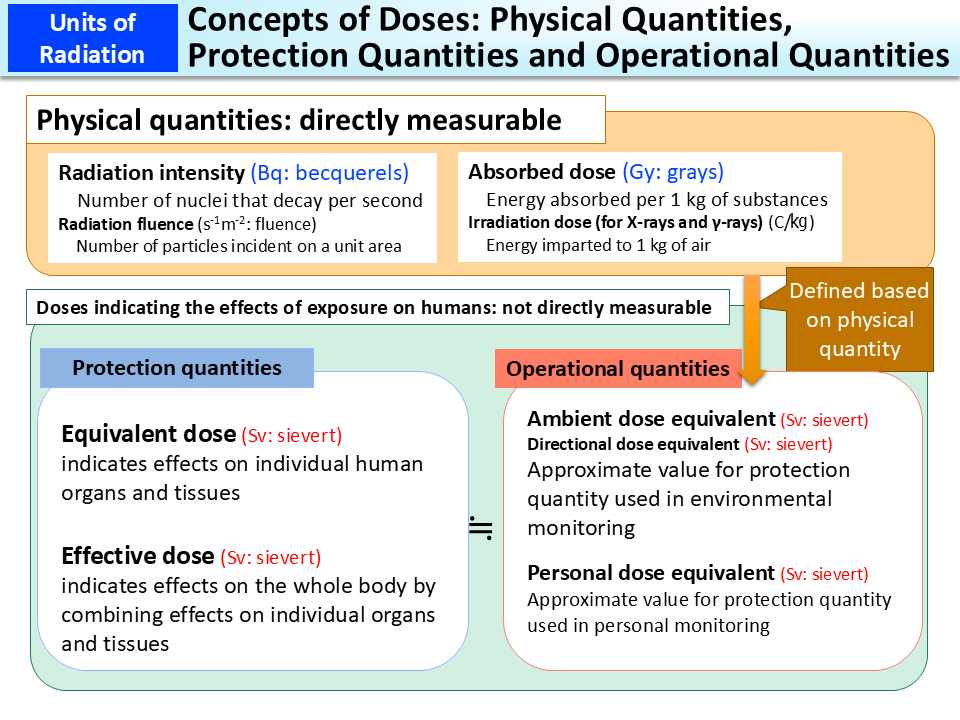Concepts of Doses: Physical Quantities, Protection Quantities and Operational Quantities
To control radiation effects on the human body, it is necessary to take into account the effects of exposure on multiple parts of the body and the effects of previous exposures. The equivalent dose and the effective dose were invented for that purpose.
The equivalent dose is obtained by weighting effects on individual organs and tissues according to the types of radiation.
The effective dose is obtained by converting the effects on individual tissues to a value for the whole body. It is not the simple average of equivalent doses for individual organs but the result of weighting according to differences in sensitivity to radiation among organs.
A factor for weighting radiation effects on individual organs is called the tissue weighting factor.
Thus, protection quantities are calculated based on doses for organs and tissues in the human body. They are therefore different from physical quantities such as the radiation intensity (unit: becquerel) and absorbed dose (unit: gray) and cannot be measured directly with instruments. To indicate effects on the human body, operational quantities are defined.
Some survey meters use sieverts in their readings. They do not directly measure a protection quantity but show approximate values defined based on measured physical quantities, i.e., operational quantities. Operational quantities include the ambient dose equivalent used in environment monitoring and the personal dose equivalent used in personal monitoring (p.41 of Vol. 1, “Dose Equivalents: Measurable Operational Quantities for Deriving Effective Doses”).
To provide conservative (on the safe side) estimates of protection quantities, operational quantities are defined to assume slightly larger numerical values than the values of protection quantities in most cases.
- Included in this reference material on March 31, 2013
- Updated on March 31, 2017

